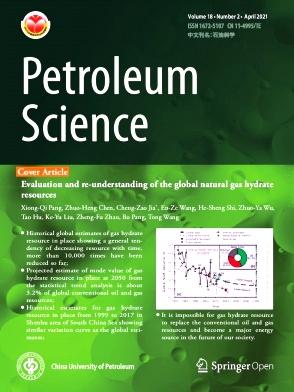全球石油天然气贸易网络的演变、复原力和原因:1995-2020
IF 6
1区 工程技术
Q2 ENERGY & FUELS
引用次数: 0
摘要
本文基于联合国商品贸易统计数据库中 1995 年至 2020 年的 HS 4 位编码贸易数据,采用复杂网络方法分析了全球PG 贸易网络的演变特征,并分别从整体和国家层面分析了其弹性的变化。结果表明(1)全球PG贸易网络规模趋于扩大,联系逐渐紧密,经历了从 "供给导向型 "向 "供需型 "格局的转变,其中美国、俄罗斯、卡塔尔、澳大利亚逐渐取代加拿大、日本、俄罗斯成为核心贸易地位,卡塔尔、阿尔及利亚、科威特等OPEC国家主要依靠PG出口占据全球供给核心,其他国家贸易地位动态交替演变。(2)全球 PG 贸易网络的弹性低于随机网络的弹性,且随着受干扰国家的增多而非线性下降。此外,美国的影响比其他国家更大。利用指数随机图模型(ERGM)进行模拟发现,国家 GDP、制度质量、共同边界和区域贸易协定网络是 PG 贸易网络形成的决定因素,这四个因素的积极影响不仅在不同地区和阶段存在显著差异,而且随着国家网络状况的增加而增加。本文章由计算机程序翻译,如有差异,请以英文原文为准。
Evolution, resilience and causes of global petroleum gas trade networks: 1995–2020
Based on the HS 4-digit code trade data in UNCOMTRADE from 1995 to 2020, this paper analyzes the characteristics of the evolution of the global PG trade network using the complex network approach and analyzes the changes in its resilience at the overall and country levels, respectively. The results illustrated that: (1) The scale of the global PG trade network tends to expand, and the connection is gradually tightened, experiencing a change from a “supply-oriented” to a “supply-and-demand” pattern, in which the U.S., Russia, Qatar, and Australia have gradually replaced Canada, Japan, and Russia to become the core trade status, while OPEC countries such as Qatar, Algeria, and Kuwait mainly rely on PG exports to occupy the core of the global supply, and the trade status of other countries has been dynamically alternating and evolving. (2) The resilience of the global PG trade network is lower than that of the random network and decreases non-linearly with more disrupted countries. Moreover, the impact of the U.S. is more significant than the rest of countries. Simulations using the exponential random graph model (ERGM) model revealed that national GDP, institutional quality, common border and RTA network are the determinants of PG trade network formation, and the positive impact of the four factors not only varies significantly across regions and stages, but also increases with national network status.
求助全文
通过发布文献求助,成功后即可免费获取论文全文。
去求助
来源期刊

Petroleum Science
地学-地球化学与地球物理
CiteScore
7.70
自引率
16.10%
发文量
311
审稿时长
63 days
期刊介绍:
Petroleum Science is the only English journal in China on petroleum science and technology that is intended for professionals engaged in petroleum science research and technical applications all over the world, as well as the managerial personnel of oil companies. It covers petroleum geology, petroleum geophysics, petroleum engineering, petrochemistry & chemical engineering, petroleum mechanics, and economic management. It aims to introduce the latest results in oil industry research in China, promote cooperation in petroleum science research between China and the rest of the world, and build a bridge for scientific communication between China and the world.
 求助内容:
求助内容: 应助结果提醒方式:
应助结果提醒方式:


